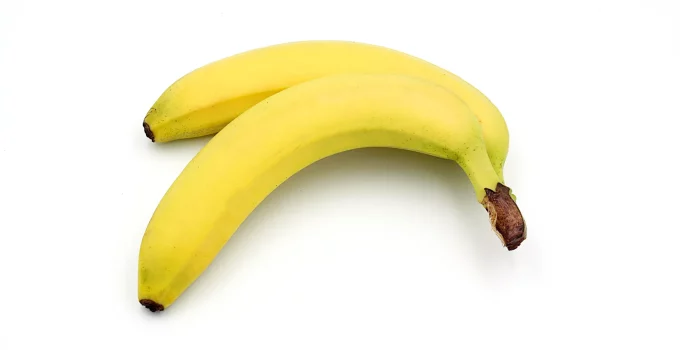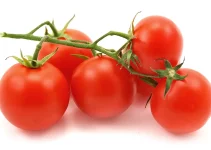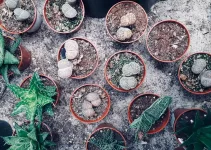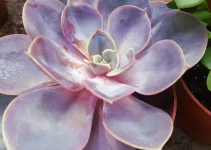The answer to the question do bananas have seeds is simple: they have seeds because they are fruits and the seeds of the plant are contained by the body of each fruit.
The same answer would be given if we were to ask the questions: do raspberries have seeds or do blueberries have seeds.
Moreover, tomatoes, peppers, cucumbers, pumpkins, eggplants, zucchini and many others that we call vegetables are actually fruits from a botanical point of view.
That’s because their body contains the seeds of the plant. And that’s the most basic definition of a fruit.
Table of Contents
Do Bananas Have Seeds? Commercial vs Wild Bananas
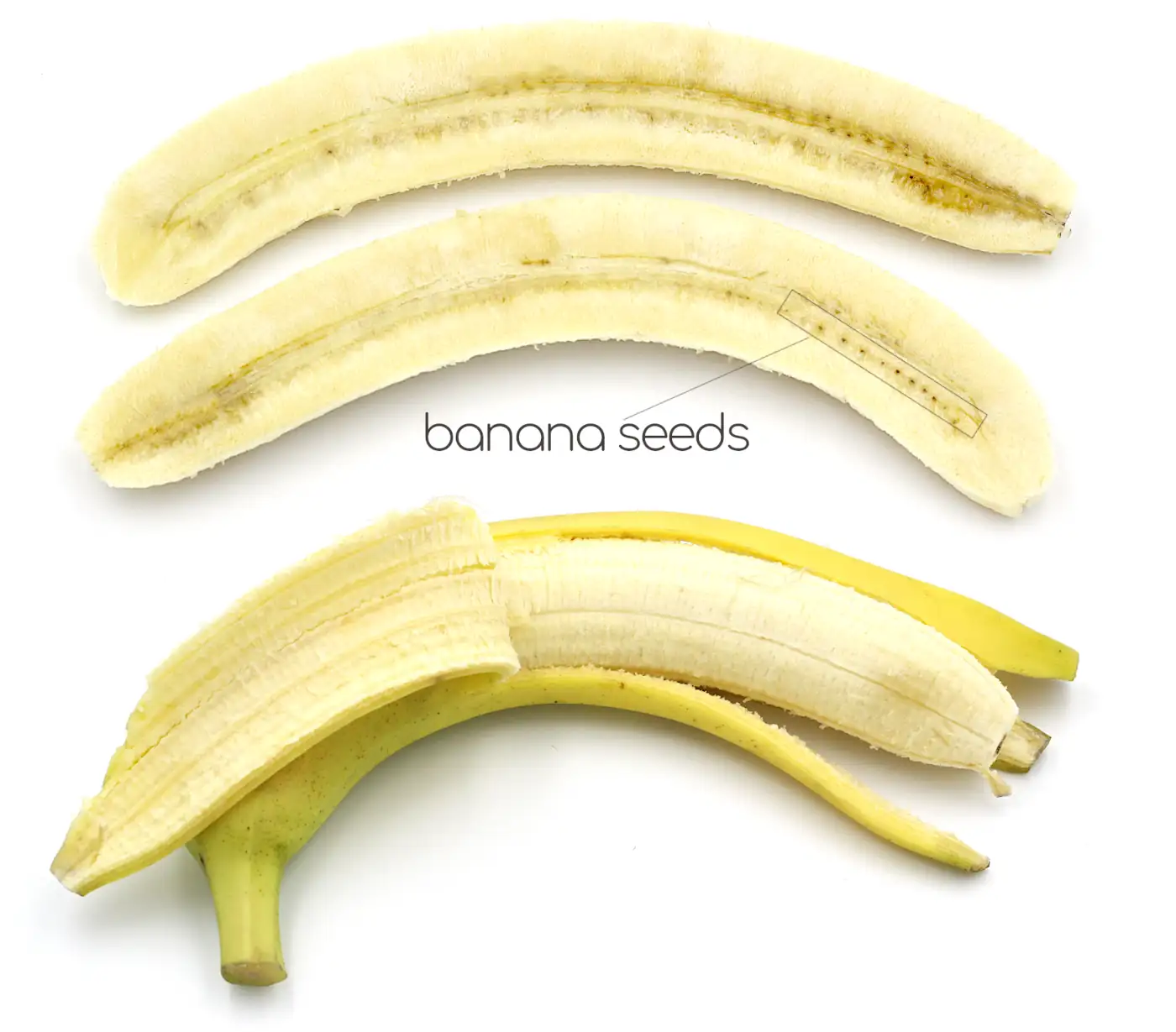
When it comes to commercial bananas, the seeds are those very tiny black spots that we can see if we slice the fruit.
Those are the types of seeds that we see for commercially grown bananas.
On the other hand, wild bananas have very large seeds. If you were to look at pictures of wild bananas, you will see that the seeds are very large. They actually make up most of the body of the fruit.
The size of the seeds in wild bananas is similar or even larger than black peppercorns. We might also say that the seeds of wild bananas look like black currants. They’re totally different from the specks of seeds that store-bought bananas have.
The awesome part about store-bought bananas is that they’re easy to eat because the seeds are incredibly small.
On the other hand, wild bananas are more difficult to consume because their large seeds are regarded as inedible, they’re more seeds than flesh.
The idea is that, in general, we can say that inside of the body of each banana fruit are seeds of the plant.
Commercial bananas can be seedless, too
Those black spots that we notice when we slice a banana, those are the seeds of the plant. Thus, bananas are fruits.
However, we might also come across bananas that don’t have seeds.
If you’ve ever wondered why bananas do not have seeds anymore, that’s because commercial bananas can often be seedless.
These seedless commercial fruits are modified to have three sets of genes instead of two. The plant with three copies of chromosomes is called a triploid.
The purpose of three copies of chromosomes is to render the plant unable to produce viable seeds. That’s how we also get seedless watermelons or other seedless fruits.
The most frequent variety we find in stores with those tiny specks of seeds or even seedless are called the Cavendish bananas.
The purpose of commercial bananas is to be sweeter and have more flesh. Wild bananas are more seeds than flesh thus, they’re not ideal for consumption.
However, since Cavendish bananas are seedless, it would have been unable to reproduce itself by seed in the wild.
Without humans discovering the Cavendish banana variety in the jungle, this variety would surely have perished quickly in the wild as an asexual, short-lived anomaly that cannot reproduce itself.
Humans fostered the Cavendish and transformed it into the beloved fruits that a large part of the global population eat frequently.
Without humans who reproduce this popular commercial variety through shoots, the Cavendish would have become extinct and we wouldn’t be able to enjoy the sweet flesh of its fruits.
Can we grow banana plants from store-bought bananas?
We know that we can grow tomatoes, lemons, peppers, blueberries and many other fruits from the seeds of the plant. Even by collecting the seeds of fruits that we buy from supermarkets.
Since we’ve answered the question do bananas have seeds, I would like to answer another question: can we grow banana plants from the seeds of the fruits that we buy?
The simple answer is that we absolutely can’t.
You shouldn’t save those tiny seeds from the bananas that we buy for consumption in the hopes that you can grow your own banana plant. It won’t happen.
The tiny black spots that we see as seeds in commercially grown bananas are immature and can’t be planted and grown.
On the other hand, if we would take the very large seeds from wild bananas, then we would be able to grow a banana plant at home. It doesn’t work for store-bought bananas.
Commercial bananas are propagated from shoots
For commercially grown banana plants, like the Cavendish, reproduction is done via the shoots (suckers, pups) that grow at the base of the parent plant.
We reproduce aloe vera plants the same way. And strawberry plants are reproduced through runners, strawberries are usually not grown from seeds.
There are always exceptions. And, most of the time, there can be multiple ways to propagate a plant. As a simple example, think of herbs that can be grown from seeds or from cuttings.
Banana plants can be grown from seeds, although not from those tiny specks that our store-bought bananas have, those are immature and not fertile. You’ll have to buy the seeds.
Nevertheless, the easiest way is to grow banana plants from pups.
How to Grow Banana Plants from Seed
Would I actually recommend growing banana plants as a thing most people should do? If you have a passion for growing exotic plants, then you could give it a try. You might also consider growing a pineapple plant if you need even more excitement.
Let’s see which are the steps you need to take if you want to grow your own banana plant at home.
If you want to skip a lot of these steps, you should buy a live banana plant. It speeds up the whole process.
Buy banana seeds
Obviously, the first step is to buy banana seeds for planting because you can’t get the seeds from our store-bought bananas.
Which banana variety you’ll end up growing depends on the seeds you have access to where you live.
My only recommendation would be to choose dwarf varieties. They’re the best for most home gardens.
The dwarf banana plants mature at approx. 8-10 feet high. The fruit usually ripens 70 to 100 days after blooming. It’s a bit of a lengthy process.
Soil
Banana plants need well-drained soil. It will be a mix of peat, perlite and vermiculite.
It must also be rich in compost because these plants are heavy feeders.
Germinate the seeds
Soak the seeds in warm water for 24-48 hours.
Fill your germination container with potting soil.
Sow the seed ¼ inch deep. Water the seed until the soil is moist. You’ll have to maintain damp conditions, that’s one important requirement.
The temperature should be at least 60 degrees Fahrenheit (15 degrees Celsius).
Germination can be lengthy and it depends on the banana variety that you’re growing. It can take 2-3 weeks or it can take 2-3 months.
When transplanting the banana seedling, wait until the seedling has 2 big leaves.
I also recommend watching this video to understand why transplanting timing matters a lot.
Container
Since these plants grow quite tall, you’ll need a big container.
A 15 gallon container should be big enough.
This big pot can be plastic, wood or ceramic. If the plant outgrows its container, you’ll need to repot it.
Light
Since these plants are natives of tropical and subtropical regions, we should know that our banana plant grown in a container should be placed in a spot that receives sun most of the day.
If you don’t have access to such a sunny place, you’ll have to resort to grow lights.
These grow lights for cactus can also work for these plants, you don’t have to buy anything too expensive. A good full-spectrum LED grow light bulb can do wonders.
It also doesn’t like cold weather.
Watering
All you have to do is to keep the soil moist all the time.
When the weather is hot, that might mean watering twice daily.
Every time you should water thoroughly and allow the water to completely drain. That’s why we always need containers with drainage holes.
During colder temperatures, reduce watering frequency.
Fertilizer
You can also use a balanced fertilizer to help your plant grow big and healthy. These plants are heavy feeders.
An all-purpose plant food or a tropical plant fertilizer can work.
Bananas don’t grow on trees
You might not have noticed but I only talked about growing banana plants and not banana trees. Of course, we’re used to talking about banana trees, like we talk about lemon trees.
When we talk about trees, we mean a plant with a woody trunk that, under favorable conditions, continues to grow from one season to the next. Banana plants don’t do that.
The banana plant does resemble a tree in size and shape, it can reach a height of 30 feet.
Nevertheless, these delicious yellow fruits actually grow on stalks. The plant grows from a root clump (rhizome) that is similar to a tulip bulb.
Plus, the plant doesn’t have a woody trunk so it can’t be considered a tree.
Another aspect to keep in mind is that the plant bears fruit for only a season.
After that, the portion above the ground dies. An underground stem remains, which grows into a new plant the following season.
Last but not least, what will also convince you that bananas don’t grow on trees is that bananas, from a botanical perspective, are berries.
On the other hand, raspberries and strawberries aren’t considered true berries. Blueberries and cranberries are true botanical berries. So are bananas, tomatoes, avocado, eggplants and grapes. It’s quite fascinating.
Botanically, true berries are simple fruits stemming from one flower with one ovary. They also typically have several seeds.
I know that we started off by answering the question do bananas have seeds but I hope you enjoyed my small guide on this wonderful and fascinating plant.

